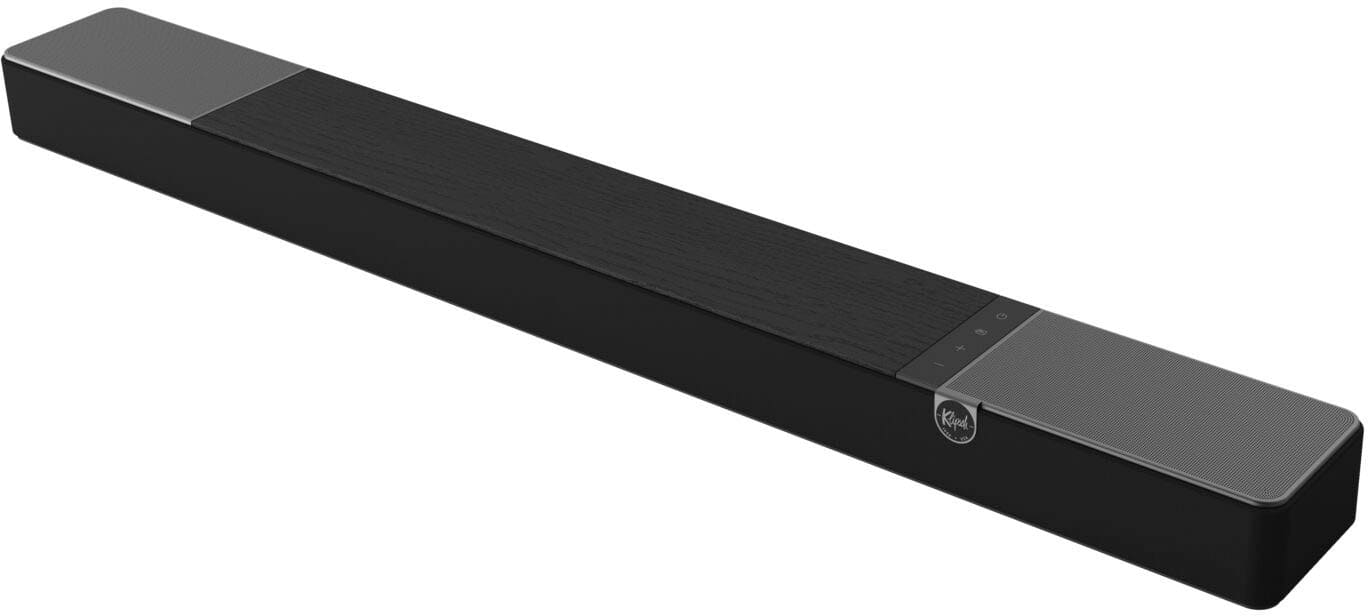 Klipsch Flexus Core 200 3.1.2 Soundbar
Klipsch Flexus Core 200 3.1.2 Soundbar

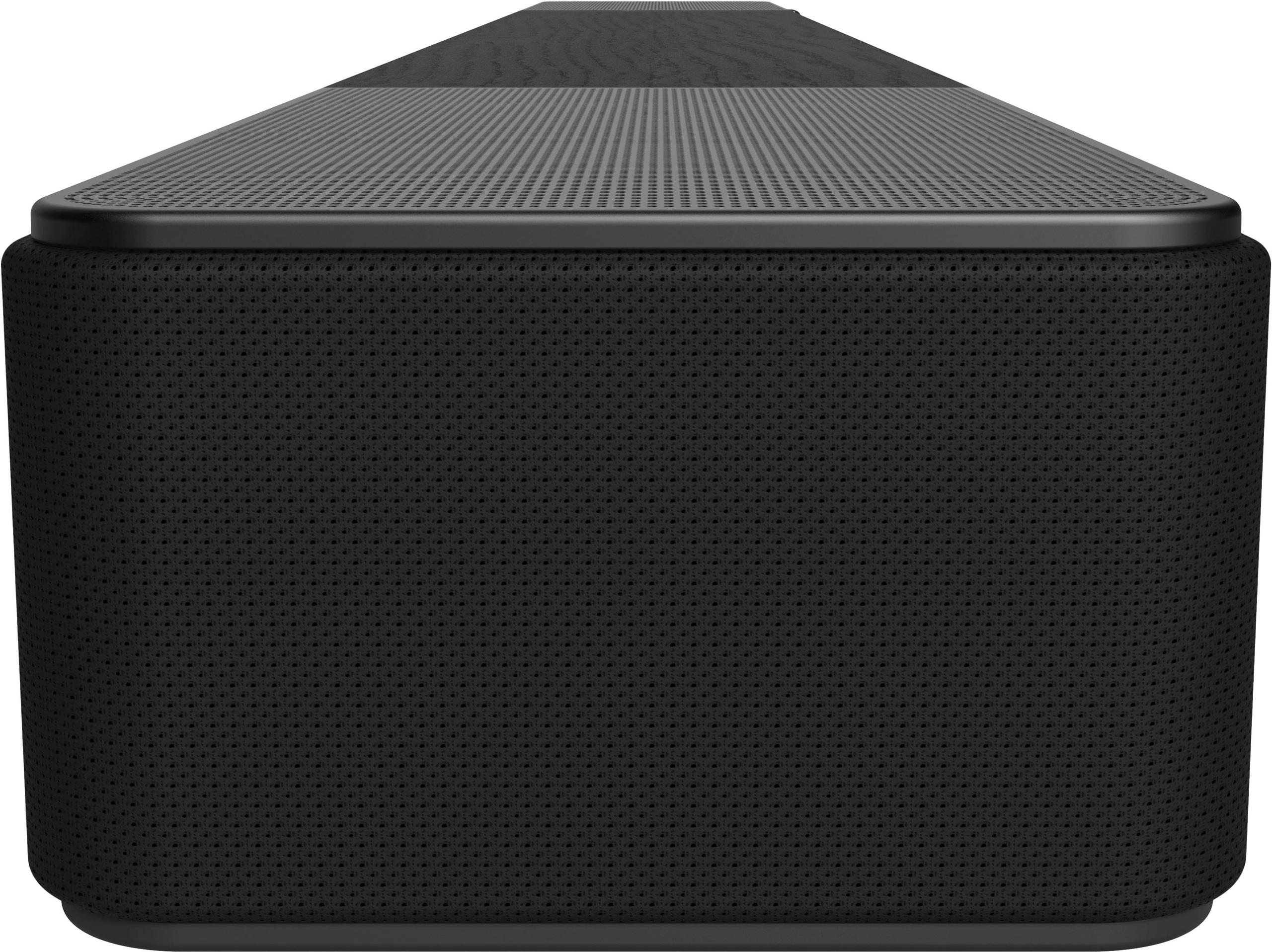
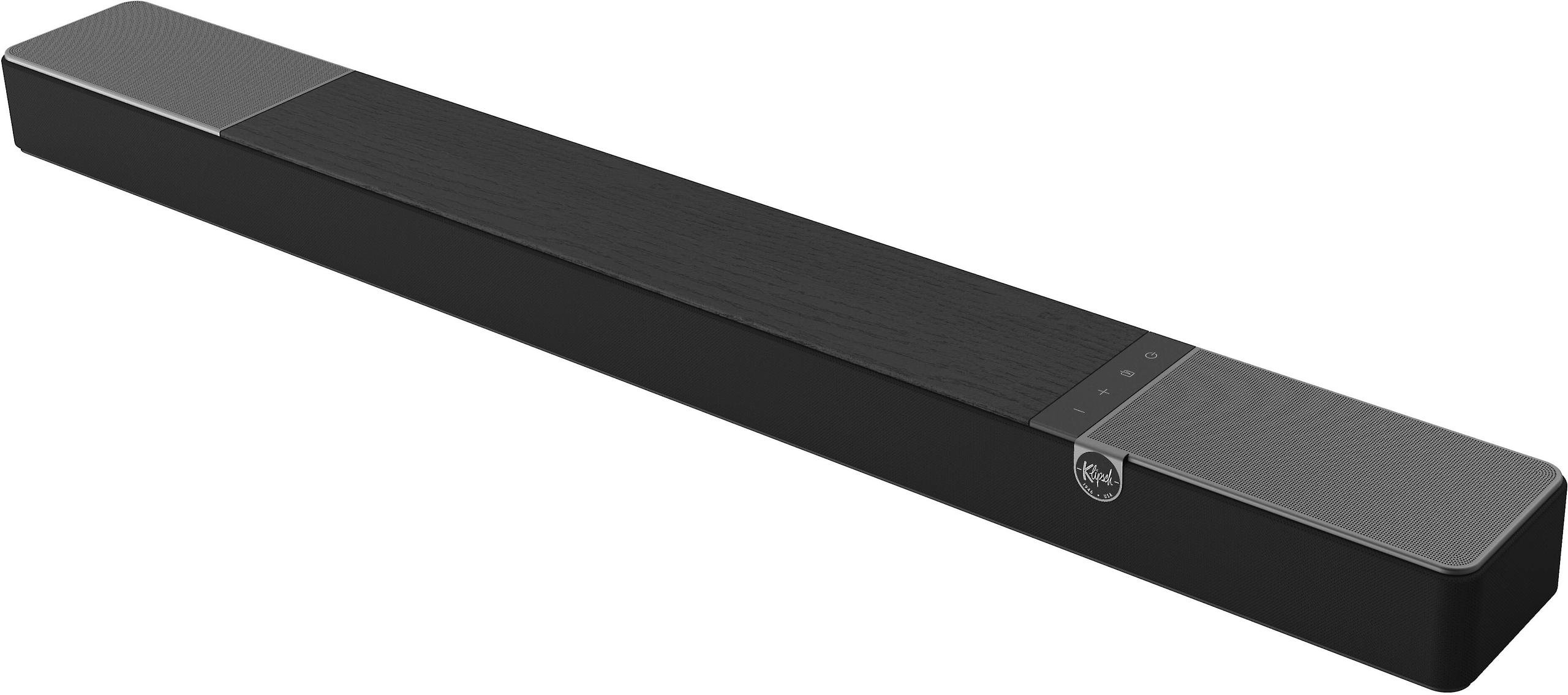


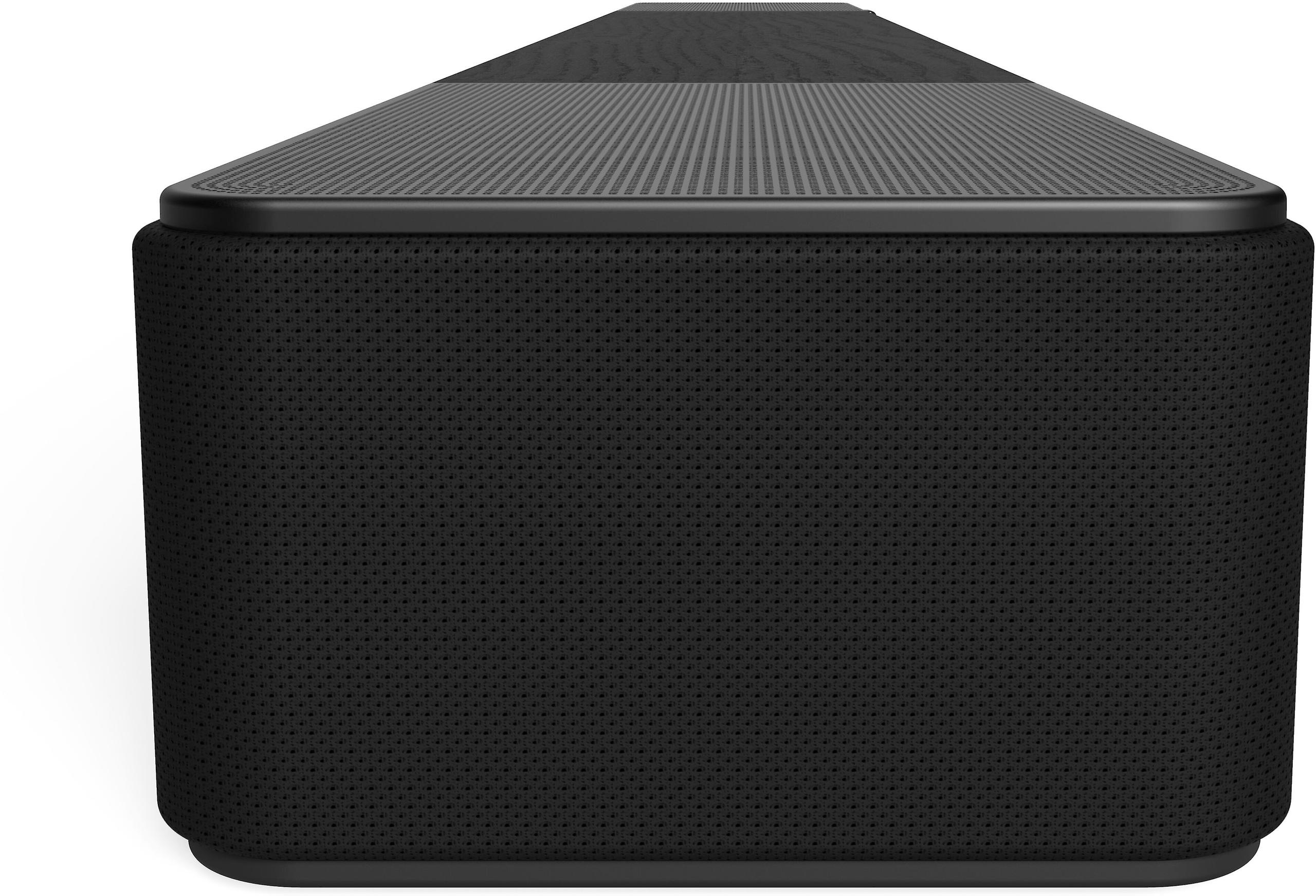


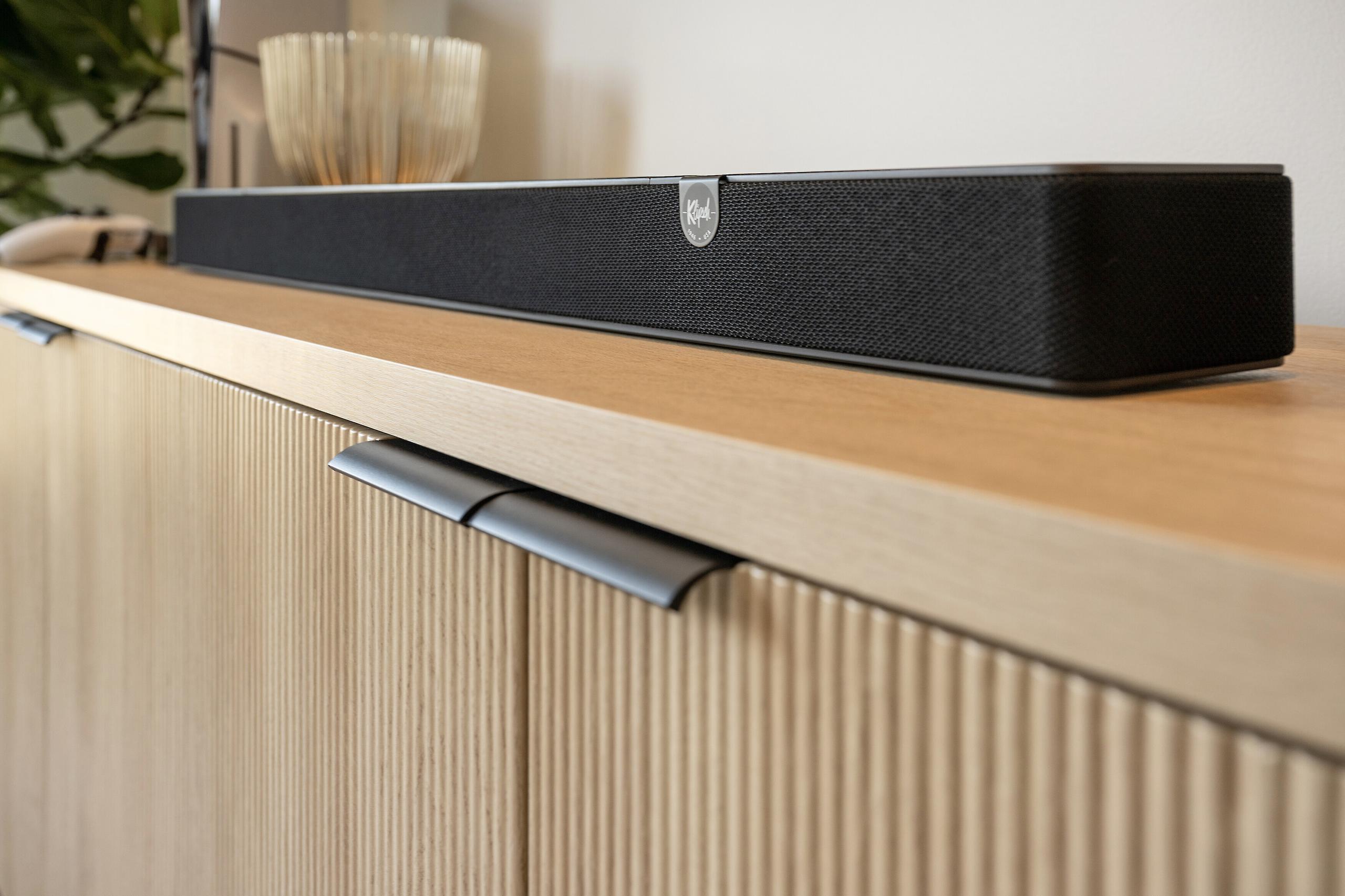
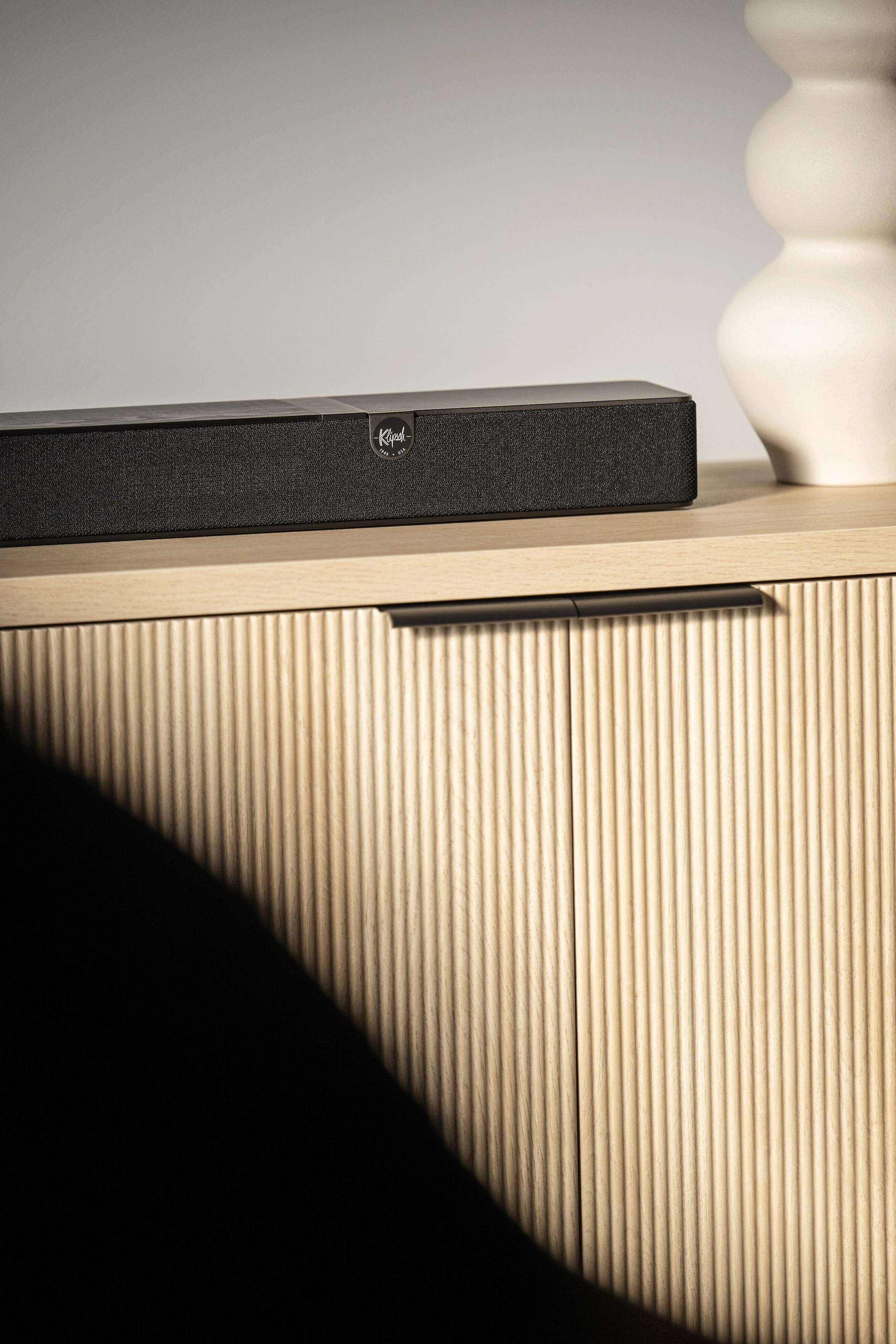

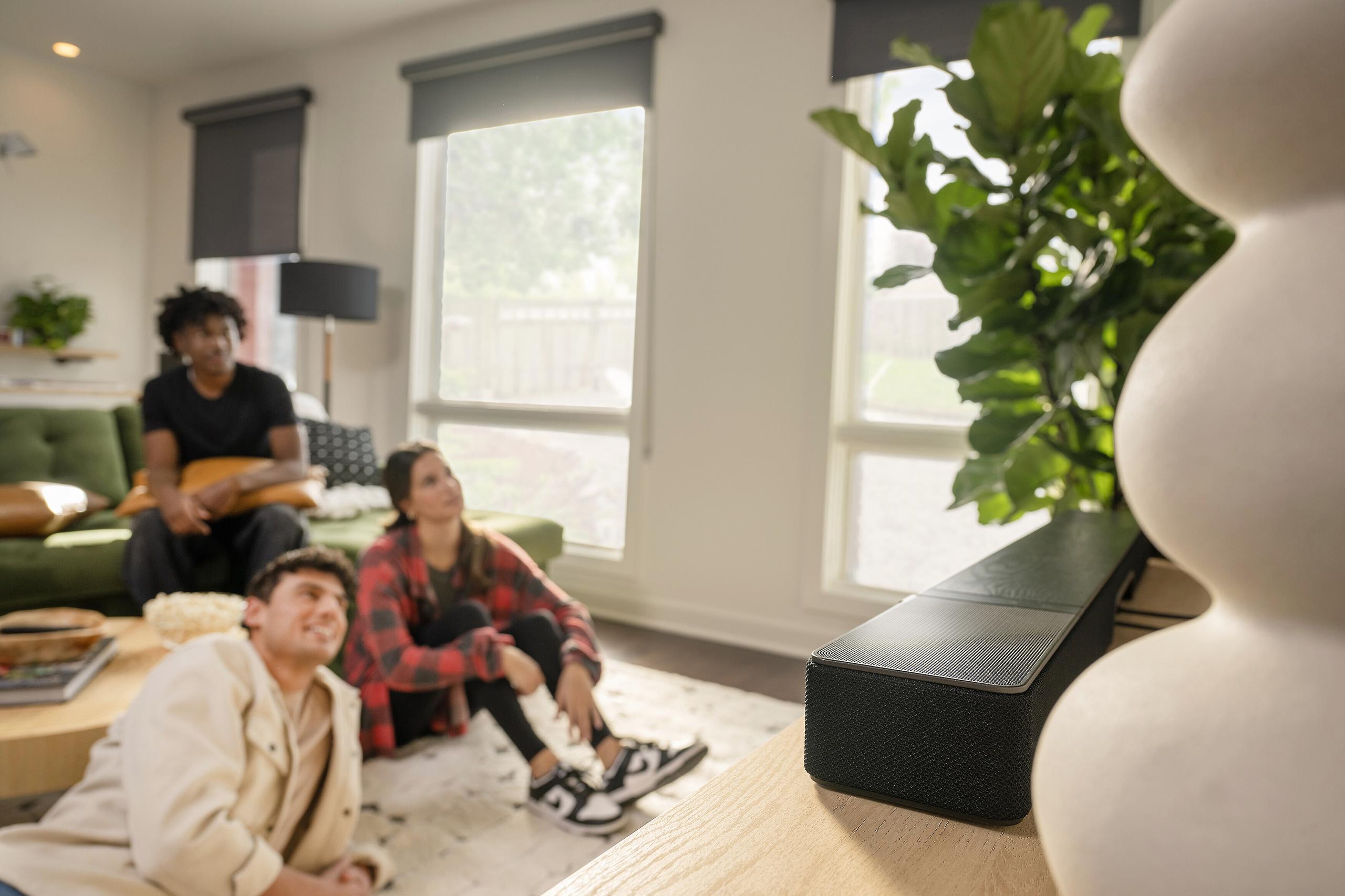
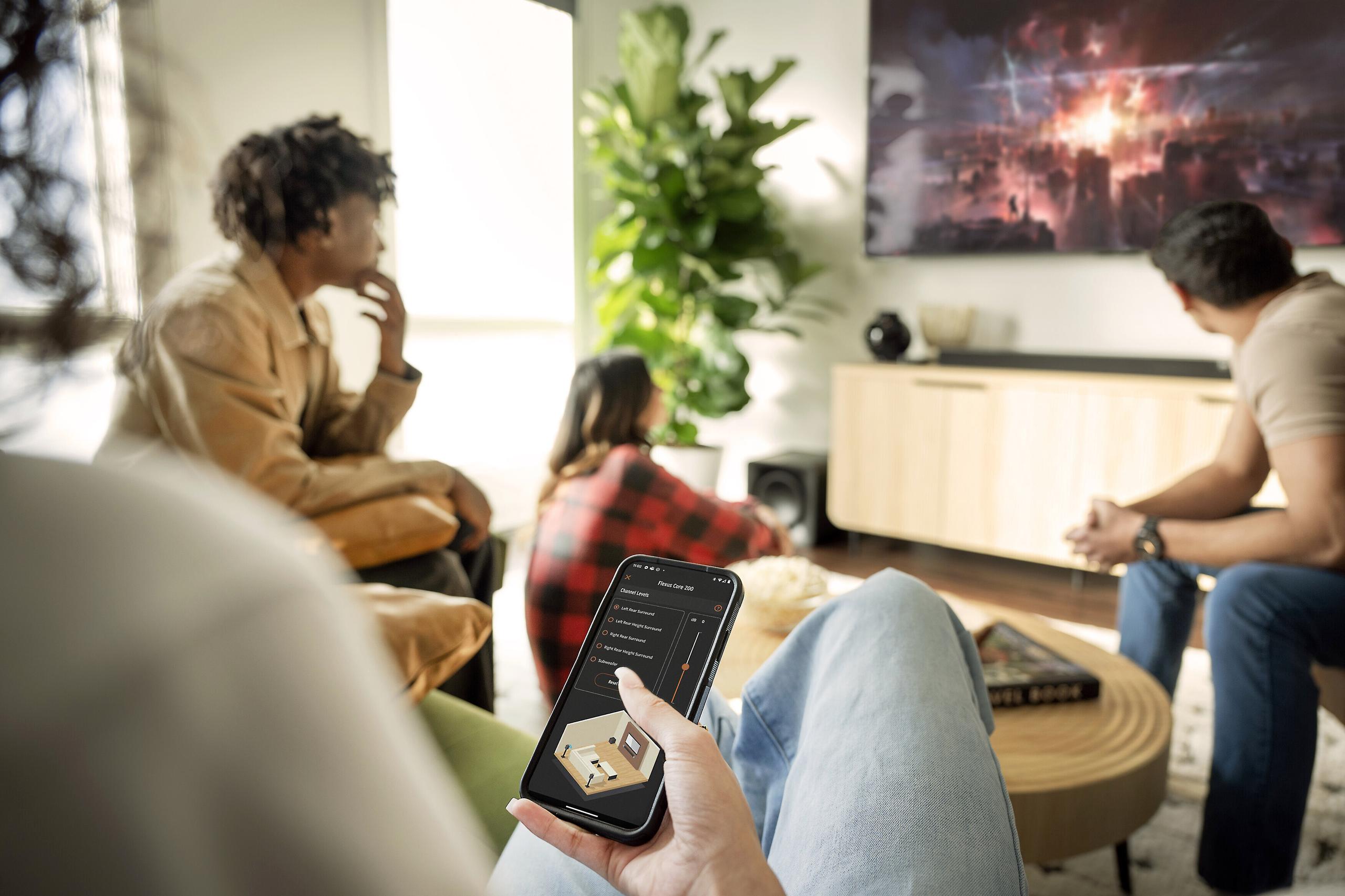













$499.00 Original price was: $499.00.$395.00Current price is: $395.00.
When Klipsch launched the Flexus Core 200 in late 2023, they aimed to solve a common problem: delivering premium home theater sound without the complexity and space requirements of traditional setups. After extensive testing, we've found it largely succeeds at this goal, while introducing some interesting innovations to the soundbar market.
The soundbar category has come a long way since the basic 2.1 systems of a decade ago. Today's premium models, like the Flexus Core 200, incorporate advanced features like Dolby Atmos (which creates a three-dimensional sound field above and around you) and sophisticated digital signal processing (DSP) that optimizes audio for different types of content.
The Flexus Core 200's design reflects Klipsch's heritage while embracing modern aesthetics. At 44 inches wide, it's sized appropriately for TVs 55 inches and larger. The ebony vinyl finish looks premium without drawing attention to itself, and the build quality feels substantial - something we've come to expect from Klipsch's higher-end products.
The 3.1.2 configuration means you get:
In our testing, this setup proved particularly effective for both movies and music. During action scenes in "Dune," for example, the ornithopter sequences demonstrated impressive vertical sound movement, while dialogue remained clear and centered.
One of the most innovative features is the dual 4-inch built-in subwoofers. While they can't match the raw power of a dedicated 12-inch subwoofer, they provide surprisingly capable bass response down to 43Hz. This is especially impressive considering there's no external subwoofer taking up floor space.
Klipsch's signature horn-loaded tweeter technology (which uses a specially shaped opening to direct high-frequency sounds more efficiently) really shines here. During quiet dialogue scenes, every word comes through with remarkable clarity - something that's often a weakness in conventional soundbars.
This proprietary wireless system deserves special mention. Unlike basic Bluetooth, it maintains a stable, low-latency connection with optional wireless surrounds and subwoofers. In our testing, we experienced zero dropouts or sync issues, even with multiple wireless components connected.
The single HDMI eARC port might seem limiting, but it handles most modern setups well:
The Klipsch Connect Plus app provides detailed control over:
The Flexus Core 200 really shines with movie content. The Atmos implementation creates a convincing sense of height, though not quite as dramatic as ceiling-mounted speakers. During our testing with "Top Gun: Maverick," jet flyovers had a genuine sense of movement from front to overhead.
Music performance surprised us positively. The soundbar's detailed midrange and clean highs make it excellent for various genres. Jazz and classical pieces benefit from the wide soundstage, while rock and electronic music have enough punch from the built-in subs for most listeners.
For gamers, the low latency and directional audio make this a solid choice. Playing "Horizon Forbidden West," the positional audio helped locate machines and environmental sounds accurately, though competitive gamers might want more low-end impact.
When considering the Flexus Core 200 against competitors, several factors stand out:
Setup is straightforward:
Pro tip: For optimal Atmos performance, ensure the upfiring drivers have a clear path to your ceiling, ideally 7-9 feet high with a flat surface.
To be thorough, we should note:
The Flexus Core 200 is ideal for:
After extensive testing across various content types, the Klipsch Flexus Core 200 emerges as a compelling option in the premium soundbar market. It strikes an excellent balance between performance, convenience, and expandability, making it particularly suitable for those wanting high-quality audio without the complexity of traditional home theater systems.
While it may not be the absolute best in any single category, its well-rounded performance and thoughtful feature set make it one of the most practical premium soundbar choices of 2024. The built-in subwoofers work surprisingly well, and the expansion options mean you can enhance the system over time as your needs or budget allow.
For most users looking to significantly upgrade their TV audio experience while maintaining flexibility for future expansion, the Flexus Core 200 represents an excellent investment in their home entertainment future.
Yes, the Flexus Core 200 offers excellent value for its price point. It delivers premium sound quality, built-in subwoofers, and Dolby Atmos support in a single unit. The ability to expand with wireless surrounds and additional subwoofers makes it especially worth considering for home theater enthusiasts.
No, the soundbar includes dual 4-inch built-in subwoofers that provide sufficient bass for most users. However, it can connect with up to three additional subwoofers if you want more powerful bass response.
The upfiring speakers provide convincing height effects for Dolby Atmos content, though not quite as dramatic as ceiling-mounted speakers. It's particularly effective in rooms with flat ceilings between 7-9 feet high.
Yes, the soundbar performs excellently with music, offering detailed midrange, clear highs, and balanced bass response. The horn-loaded tweeter and aluminum drivers provide high-quality music reproduction across various genres.
At 44 inches wide, the soundbar pairs well with TVs 55 inches and larger. It provides optimal sound coverage for typical living room and home theater setups.
Setup is straightforward, primarily requiring just one HDMI eARC connection to your TV. The Klipsch Connect Plus app guides you through initial setup and provides easy access to sound adjustments.
Yes, while HDMI eARC provides the best connection, the Klipsch Flexus Core 200 includes optical and USB-C inputs for compatibility with older TVs and other devices.
Yes, the soundbar supports adding Flexus wireless surround speakers and additional subwoofers. The proprietary Klipsch Transport technology ensures reliable wireless connections for expanded components.
Dialog clarity is excellent thanks to the dedicated center channel and horn-loaded tweeter technology. The Voice mode further enhances dialogue when needed.
Yes, it's well-suited for gaming with low latency performance and good directional audio. The Dolby Atmos support enhances immersion in games that support 3D audio, though competitive gamers might want more powerful bass response.
We've done our best to create useful and informative comparisons to help you decide what product to buy. Our research has used advanced automated methods to create this comparison and perfection is not possible - please contact us for corrections or questions. These are the sites we've researched in the creation of this article: soundandvision.com - avnirvana.com - avsforum.com - cnet.com - klipsch.com - klipsch.com - youtube.com - assets.klipsch.com - klipsch.com - worldwidestereo.com - klipsch.com - crutchfield.com - digitaltrends.com
| Klipsch Flexus Core 200 3.1.2 Soundbar |
|---|
| Channel Configuration - Determines sound positioning capabilities: 3.1.2 Dolby Atmos |
| System Power - Affects maximum volume and dynamic range: 185W RMS |
| Built-in Subwoofers - Eliminates need for external sub: Dual 4" drivers |
| Frequency Response - Shows range of reproducible sound: 43Hz-20kHz |
| Front Firing Drivers - Impacts clarity and sound separation: 4 x 2.25" Aluminum Cone Drivers |
| Height Channels - Enables overhead sound effects: 2 x 2.25" Upfiring Drivers |
| Horn-Loaded Tweeter - Enhances dialogue clarity: 1 x 0.75" tweeter |
| Key Inputs - Determines connectivity options: HDMI eARC, Bluetooth, USB-C, Digital Optical |
| Expandability - Future upgrade potential: Supports additional wireless sub and surrounds |
| Width: 44" (111.8cm) |
| Height: 3 1/16" (7.8cm) |
| Depth: 4 15/16" (12.6cm) |
| Power Supply: Internal 100-240V 50/60Hz |
The Sennheiser AMBEO Soundbar Mini represents a more technologically advanced approach to immersive sound, leveraging sophisticated digital processing to create a virtual 7.1.4 soundstage from its compact 27.6-inch frame. While it commands a higher $799 price point, it delivers remarkable room-filling sound through its advanced AMBEO virtualization technology and automatic room calibration system. The integration of smart features like Wi-Fi streaming, AirPlay, and voice assistant compatibility makes it a more versatile entertainment hub, particularly appealing to those who prioritize streaming music and want seamless smart home integration.
Where the AMBEO Mini particularly excels is in creating a convincing three-dimensional soundfield in smaller to medium-sized rooms, often surpassing what you might expect from its compact size. Its precise audio positioning and detailed sound signature provide excellent performance for both movies and music, though it lacks the physical impact and expansion options of the Flexus Core. The superior processing also handles a wider range of audio formats, including DTS:X and 360 Reality Audio, making it more versatile for different content types. While its higher price and limited expansion options might deter some buyers, its sophisticated technology and space-efficient design make it an excellent choice for those seeking premium sound in a compact package, especially in apartments or smaller living spaces where a larger audio system isn't practical.
🤖 Read Detailed Comparison
👌Sennheiser AMBEO Soundbar Mini Details
💵 See Sennheiser AMBEO Soundbar Mini Price
For those seeking a simpler and more budget-friendly solution, the $279 Bose TV Speaker offers an appealing alternative. Its compact design and straightforward setup make it particularly attractive for smaller rooms or situations where a full-featured soundbar might be overkill. While it doesn't match the Flexus Core's immersive sound capabilities, it excels at its primary mission: delivering clearer dialogue and better overall TV sound than built-in speakers. The dedicated dialogue mode is particularly effective, and the basic bass adjustment provides enough control for most users without overwhelming the space.
What's particularly impressive about the Bose is how it achieves good sound quality without complexity. The plug-and-play nature, combined with a simple remote and basic connectivity options, makes it an ideal choice for users who want better audio without diving into complex settings or future expansion considerations. While you won't get the height channels or room-filling sound of the Klipsch, the Bose TV Speaker proves that you don't need to spend $500 to significantly improve your TV's audio. It's especially well-suited for apartments, bedrooms, or situations where space and simplicity are priorities over advanced home theater features.
🤖 Read Detailed Comparison
👌Bose TV Speaker Soundbar Details
💵 See Bose TV Speaker Soundbar Price
The Klipsch Flexus Core 100 ($349.99) offers an attractive alternative for those seeking quality TV audio without the premium features of its bigger sibling. With its compact 28-inch width and 100W power output, it's particularly well-suited for smaller rooms and TVs under 55 inches. The dual 4-inch built-in subwoofers deliver surprisingly capable bass for its size, while the simplified 2.1 channel configuration provides clear, balanced sound that excels with everyday content like news, sports, and streaming shows.
Where the Core 100 really shines is its value proposition. At $150 less than the Core 200, it delivers most of the essential features including HDMI eARC, Bluetooth connectivity, and expansion options for wireless surrounds and subwoofers. While it lacks Dolby Atmos and a dedicated center channel, these omissions won't significantly impact users who primarily watch standard TV content or have smaller viewing spaces. For many buyers, especially those with rooms under 200 square feet, the Core 100 hits the sweet spot of performance and affordability without sacrificing build quality or core functionality.
🤖 Read Detailed Comparison
👌Klipsch Flexus Core 100 Soundbar Details
💵 See Klipsch Flexus Core 100 Soundbar Price
The Bose Solo Soundbar Series 2 takes a simpler approach to TV audio enhancement, focusing on dialogue clarity and ease of use at a more accessible $179 price point. While it lacks the advanced features of the Flexus Core 200, it excels at its primary mission of improving TV sound with minimal complexity. The plug-and-play setup and straightforward remote control make it particularly appealing for users who want better audio without diving into technical configurations. Its compact design works well in smaller rooms, and the dialogue enhancement mode effectively brings out clearer speech in TV shows and movies.
However, the Bose Solo Soundbar Series 2 shows its limitations when compared to the Flexus Core 200's more advanced capabilities. The absence of Dolby Atmos support, dedicated subwoofers, and expansion options means you won't get the same immersive experience for movies and sports. The basic 2.0 channel configuration and older Bluetooth 4.0 technology reflect its entry-level positioning. While it serves well for everyday TV watching and occasional music streaming, it's best suited for users with modest audio needs who prioritize simplicity and value over advanced home theater features.
🤖 Read Detailed Comparison
👌Bose Solo Soundbar Series 2 Soundbar Details
💵 See Bose Solo Soundbar Series 2 Soundbar Price
The Samsung HW-B550D takes a different approach at a significantly lower price point of $177.99, offering solid performance for casual viewers who don't need premium features. Its external wireless subwoofer actually provides more impactful bass than the Klipsch's built-in solution, though with less refinement, and its DTS Virtual:X processing creates a convincing sense of spatial audio without requiring ceiling speakers. The dedicated Game Mode and Adaptive Sound Lite features show Samsung's focus on practical everyday use rather than audiophile-grade performance.
Where the Samsung HW-B550D really shines is in its value proposition and simplicity. While it can't match the Klipsch's dialogue clarity or Atmos capabilities, it delivers clear sound improvement over TV speakers at just over one-third of the price. For viewers who mainly watch regular TV programming and don't need premium features like Dolby Atmos or system expandability, it provides an excellent balance of performance and affordability. The more compact 34-inch width also makes it a better fit for smaller TVs and spaces where the Klipsch might be too large.
🤖 Read Detailed Comparison
👌Samsung HW-B550D 3.1 Channel Sound Bar Details
💵 See Samsung HW-B550D 3.1 Channel Sound Bar Price
The Samsung B-Series B750 takes a different approach at a more affordable $277 price point, offering immediate 5.1 surround sound with its included wireless subwoofer and surround speakers. Where it really shines is in delivering powerful bass impact and traditional surround effects right out of the box, making it an attractive option for those who want a complete home theater experience without waiting to add additional speakers. The separate subwoofer provides stronger low-frequency performance than the Klipsch's built-in woofers, though it lacks the same refinement in the midrange and high frequencies.
While the Samsung B-Series doesn't support Dolby Atmos or offer the same level of clarity as the Klipsch, it provides excellent value for smaller rooms and apartments where its 5.1 configuration can create an engaging surround sound field. The system's flexible subwoofer placement and adjustable bass levels make it particularly suitable for shared living spaces where noise control might be important. However, users should note that they'll miss out on the overhead effects and superior dialogue clarity that the Klipsch provides, as well as the option to expand the system later.
🤖 Read Detailed Comparison
👌Samsung B-Series 5.1 Channel Soundbar with Subwoofer Details
💵 See Samsung B-Series 5.1 Channel Soundbar with Subwoofer Price
The Samsung HW-Q990D represents a significant step up in both performance and price at $1,999, offering a complete home theater solution with 11.1.4 channels, a dedicated wireless subwoofer, and rear speakers. Its standout features include superior room correction technology that continuously adapts to your space, more convincing Dolby Atmos effects thanks to four upfiring drivers, and comprehensive gaming support with HDMI 2.1 features. The additional channels and speakers create a more encompassing sound field that truly wraps around you, making it particularly effective for larger rooms and serious home theater enthusiasts.
While the Samsung delivers a more premium experience, the question becomes whether the additional $1,500 investment is justified for your specific needs. The Samsung HW-Q990D excels in creating a more theatrical experience with better bass impact and more precise sound placement, but it also requires more setup time and space for optimal performance. For many users, especially those with smaller rooms or more modest needs, the core performance of the Klipsch might represent a better value, offering about 70% of the premium experience at just 25% of the cost.
🤖 Read Detailed Comparison
👌Samsung HW-Q990D 11.1.4 Channel Sound Bar Details
💵 See Samsung HW-Q990D 11.1.4 Channel Sound Bar Price
The Sony BRAVIA Theater Bar 9 represents a more premium approach to home theater sound, featuring a sophisticated 7.0.2 channel configuration with 13 speakers and advanced 360 Spatial Sound Mapping. While it commands a significantly higher price at $1,099, it delivers noticeably more immersive Dolby Atmos performance through its ability to create phantom speakers that expand the soundstage beyond the physical unit. The Sony's room correction technology and multiple HDMI 2.1 inputs make it particularly appealing for larger rooms and gaming setups, where its advanced processing can make a meaningful difference in the listening experience.
Where the Sony BRAVIA Theater Bar 9 stands out is in its technical capabilities and ecosystem integration. The ability to stream via WiFi, AirPlay, and Spotify Connect adds convenience, while its compatibility with BRAVIA TVs creates a seamless control experience. However, it's worth noting that achieving its full potential often requires purchasing additional components like a separate subwoofer, further increasing the overall investment. For those seeking the most immersive standalone soundbar experience and aren't constrained by budget, the Sony's superior processing and expanded speaker array create a more cinema-like experience, though at more than twice the price of the Klipsch.
🤖 Read Detailed Comparison
👌Sony BRAVIA Theater Bar 9 Soundbar Details
💵 See Sony BRAVIA Theater Bar 9 Soundbar Price
The Samsung HW-S700D ($397) takes a noticeably different approach to the soundbar experience, emphasizing smart features and room integration over raw audio performance. Its ultra-slim design and comprehensive feature set, including SpaceFit Sound Pro room correction and Q-Symphony TV speaker integration, make it particularly appealing for Samsung TV owners. The inclusion of voice assistants, SmartThings compatibility, and advanced audio processing shows Samsung's focus on creating a modern, connected audio solution.
While the Samsung can't quite match the Klipsch's dynamic range and true Atmos performance, it offers impressive value at its lower price point. Its Active Voice Amplifier technology provides excellent dialogue clarity, and the virtual Atmos processing creates a convincing sense of space, if not quite reaching the overhead precision of dedicated upfiring speakers. For those prioritizing a sleek aesthetic and smart home integration over absolute audio performance, the Samsung HW-S700D represents a compelling alternative that still delivers satisfying sound quality for both movies and casual music listening.
🤖 Read Detailed Comparison
👌Samsung HW-S700D 3.1 Channel Slim Soundbar Details
💵 See Samsung HW-S700D 3.1 Channel Slim Soundbar Price
The Sony HT-A8000 BRAVIA Theater Bar 8 ($698.00) takes a different approach to premium sound, offering more sophisticated room calibration and advanced connectivity options. Its standout 360 Spatial Sound Mapping technology creates a more enveloping soundstage, particularly beneficial in larger rooms where sound can bounce effectively off walls. The inclusion of HDMI 2.1 features like VRR and 4K/120Hz passthrough makes it more future-proof for gaming, while support for additional audio formats including DTS:X and IMAX Enhanced provides greater compatibility with various content sources.
However, achieving the HT-A8000's full potential requires investing in optional rear speakers and a subwoofer, which can push the total cost well above $1,400. While its superior room calibration and virtual speaker technology create a more theater-like experience, the higher price point and need for additional components make it a less compelling value proposition for those seeking immediate performance. The integration with Sony BRAVIA TVs offers unique features like using the TV's speakers as an additional center channel, but this benefit is limited to those already in the Sony ecosystem.
🤖 Read Detailed Comparison
👌Sony HT-A8000 BRAVIA Theater Bar 8 Soundbar Details
💵 See Sony HT-A8000 BRAVIA Theater Bar 8 Soundbar Price
The $399 Yamaha SR-B40A offers a more traditional 2.1 approach, featuring a powerful wireless subwoofer with a larger 6.5-inch driver that delivers noticeably deeper bass impact. While it doesn't provide true Dolby Atmos like the Klipsch, its virtual processing creates a convincing sense of immersion, and its simpler configuration often results in better music playback. The included wireless subwoofer provides more placement flexibility and stronger low-end performance, particularly beneficial in action movies and music with deep bass. For many users, especially in small to medium-sized rooms, this simpler configuration might actually be preferable.
At $100 less than the Klipsch, the Yamaha represents excellent value, particularly for those who want a complete solution without future expansion needs. While it lacks a dedicated center channel and true height speakers, its dialogue enhancement features work effectively, and the overall sound quality is impressive for the price point. The more compact design and wireless subwoofer make it particularly well-suited for apartments or situations where flexibility in subwoofer placement is important. However, users looking to build a more comprehensive home theater system over time might miss the expansion options available with the Klipsch.
🤖 Read Detailed Comparison
👌Yamaha SR-B40A 2.1-Channel Sound Bar with Wireless Subwoofer Details
💵 See Yamaha SR-B40A 2.1-Channel Sound Bar with Wireless Subwoofer Price
The Samsung HW-Q800D ($697.99) takes a different approach with its 5.1.2 configuration, featuring a dedicated wireless subwoofer and additional surround channels. This setup delivers more powerful bass and a wider soundstage, particularly noticeable during action scenes and gaming sessions. Its SpaceFit Sound Pro room calibration technology automatically optimizes audio for your specific space, while advanced connectivity options including Wi-Fi, AirPlay, and Chromecast provide more flexible streaming options. The inclusion of both Dolby Atmos and DTS:X support ensures compatibility with virtually all home theater content.
While it commands a higher price point, the Samsung justifies the premium for users wanting a more complete home theater experience right out of the box. Its separate subwoofer and additional channels make it better suited for larger rooms and more impactful movie viewing. However, it lacks the modular expansion capabilities of the Klipsch, limiting future upgrade options to just surround speakers. The Samsung HW-Q800D makes the most sense for those who want maximum features and performance immediately, particularly in larger spaces where its additional power and separate subwoofer can really shine.
🤖 Read Detailed Comparison
👌Samsung HW-Q800D 5.1.2 Channel Soundbar Details
💵 See Samsung HW-Q800D 5.1.2 Channel Soundbar Price
The JBL Bar 1000 ($1,139.95) represents a significant step up in home theater capability, offering a complete 7.1.4 surround sound solution with innovative features like detachable wireless rear speakers and a powerful 10-inch wireless subwoofer. Its MultiBeam technology works with four up-firing drivers (two in the main bar and two in the rear speakers) to create a more convincing Dolby Atmos effect, while the dedicated subwoofer delivers deeper, more impactful bass that can fill larger rooms. The system's 880W of total power provides substantial headroom for dynamic movie scenes, and the inclusion of multiple HDMI inputs with 4K/HDR passthrough adds valuable connectivity flexibility.
While the JBL Bar 1000 commands more than twice the price of the Klipsch Flexus Core 200, it justifies the premium for users seeking a more immersive home theater experience, especially in larger spaces over 15x20 feet. The detachable rear speakers offer true surround sound without permanent installation or wiring, and their rechargeable battery design (lasting up to 10 hours) adds convenient placement flexibility. Additional features like built-in Wi-Fi streaming, automatic room calibration, and PureVoice dialogue enhancement technology make it a more complete solution out of the box, though these benefits need to be weighed against its significantly higher investment.
🤖 Read Detailed Comparison
👌JBL Bar 1000 Surround Sound System with 7.1.4 Channel Soundbar, 10" Wireless Subwoofer, Detachable Rear Speakers, and Dolby Atmo Details
💵 See JBL Bar 1000 Surround Sound System with 7.1.4 Channel Soundbar, 10" Wireless Subwoofer, Detachable Rear Speakers, and Dolby Atmo Price
The $279.95 Yamaha SR-B30A takes a more practical approach, offering an all-in-one solution with built-in subwoofers that deliver surprisingly capable bass response. While it doesn't match the Klipsch's sound quality, it provides excellent value with its Clear Voice technology and virtual surround processing. The compact design and integrated bass drivers make it particularly well-suited for apartments, bedrooms, or smaller living rooms where space is at a premium and a separate subwoofer might be impractical.
At nearly half the price, the Yamaha delivers impressive performance for everyday TV watching and casual movie viewing. While it lacks true Atmos capabilities and the expandability options of the Klipsch, its virtual processing creates a convincing sound field that will satisfy most viewers. The Yamaha SR-B30A represents a significant upgrade over TV speakers without the complexity or space requirements of a more elaborate system, making it an excellent choice for those seeking a straightforward audio upgrade that balances performance and value.
🤖 Read Detailed Comparison
👌Yamaha SR-B30A Sound Bar with Built-In Subwoofers Details
💵 See Yamaha SR-B30A Sound Bar with Built-In Subwoofers Price
The Sonos Arc Ultra takes a distinctly different approach at nearly twice the price point, offering an impressive 9.1.4 channel configuration that creates a more expansive soundstage compared to the Flexus Core 200. While it lacks built-in subwoofers, it compensates with superior Dolby Atmos performance through four upfiring speakers and sophisticated digital processing. The Arc Ultra also brings significant smart features to the table, including WiFi streaming, voice control integration, and multi-room audio capabilities that make it more versatile for whole-home audio solutions.
However, achieving the Arc Ultra's full potential requires additional investment, particularly the $749 Sonos subwoofer for optimal bass performance. While its room calibration technology and ecosystem integration are impressive, the total investment approaching $1,750 with a subwoofer makes it harder to justify unless you're specifically looking to build a Sonos-based smart home system. The Sonos Arc Ultra delivers superior technical performance in larger rooms and more sophisticated Atmos effects, but the value proposition becomes more questionable when compared to the Flexus Core 200's impressive out-of-the-box performance and included bass capabilities at half the price.
🤖 Read Detailed Comparison
👌Sonos Arc Ultra Dolby Atmos Soundbar Details
💵 See Sonos Arc Ultra Dolby Atmos Soundbar Price
The $799 LG S90TR takes a different approach by including wireless rear speakers and a separate subwoofer right out of the box, delivering a more complete home theater experience. Its 7.1.3 channel configuration creates notably more precise sound positioning, particularly during action scenes where effects move around and behind the viewer. The addition of smart features like Wi-Fi connectivity, voice assistant support, and automatic room correction also helps justify its $300 premium over the Klipsch, especially for tech-savvy users who'll take advantage of these capabilities.
However, this fuller feature set comes with increased setup complexity and space requirements compared to the Klipsch's elegant single-unit solution. While the LG S90TR delivers superior immersion for movies and gaming, its advantages may be less noticeable in smaller rooms or for users primarily watching TV shows and streaming content. The included wireless subwoofer provides deeper, more impactful bass, though some users might find the Klipsch's built-in subwoofers sufficient for their needs. The decision between these systems ultimately comes down to room size, primary use case, and whether the enhanced surround capabilities justify the higher price tag.
🤖 Read Detailed Comparison
👌LG S90TR 7.1.3 Channel Soundbar with Wireless Subwoofer and Rear Speakers - Soundbar Details
💵 See LG S90TR 7.1.3 Channel Soundbar with Wireless Subwoofer and Rear Speakers - Soundbar Price
The LG S95TR takes a more traditional home theater approach with its 9.1.5 channel configuration, including separate wireless rear speakers and a dedicated subwoofer. Where it really stands out is in creating a more encompassing sound field, particularly noticeable in larger rooms where its additional channels and more powerful 810W output can truly shine. Its five up-firing speakers (compared to the Flexus Core's two) create more convincing overhead effects, while its AI room calibration system actively optimizes the sound based on your specific room acoustics. For serious home theater enthusiasts, these features deliver a more cinema-like experience, especially during complex action scenes where sound moves dynamically around the room.
However, at twice the price of the Flexus Core 200, the LG S95TR raises the question of diminishing returns. While it undoubtedly offers superior surround sound immersion and deeper bass through its separate subwoofer, many users might find the performance gap doesn't justify the significant price difference. The multi-component setup also requires more space and thought about speaker placement, though the wireless connectivity helps minimize cable clutter. It's best suited for dedicated home theater spaces or larger rooms where its additional capabilities can be fully appreciated, rather than smaller living rooms where the Flexus Core 200's all-in-one design might actually be more practical.
🤖 Read Detailed Comparison
👌LG S95TR 9.1.5 Channel Soundbar with Dolby Atmos Soundbar Details
💵 See LG S95TR 9.1.5 Channel Soundbar with Dolby Atmos Soundbar Price
The JBL Bar 300 5.0 ($349) offers a more streamlined and budget-friendly approach, emphasizing smart features and ease of use over physical audio components. Its virtual 5.0 processing creates a convincing surround effect in smaller spaces, while built-in WiFi, Chromecast, and AirPlay support provide extensive streaming options that the Klipsch lacks. JBL's PureVoice technology effectively enhances dialogue clarity, though through digital processing rather than dedicated hardware, and its 260-watt output provides ample power for most viewing scenarios.
At $150 less than the Klipsch, the JBL Bar 300 presents compelling value for users who prioritize simplicity and smart integration over ultimate audio performance. While it can't match the Klipsch's physical Atmos effects or bass impact, its bass-reflex ports deliver satisfactory low-end response for casual viewing and music playback. The tradeoff comes in expandability and audio precision - you're getting a complete but closed system that works best in rooms under 200 square feet. For apartments, bedrooms, or situations where ease of use matters more than home theater authenticity, the JBL's combination of features and performance makes it an attractive alternative.
🤖 Read Detailed Comparison
👌JBL Bar 300 5.0 Soundbar Details
💵 See JBL Bar 300 5.0 Soundbar Price
The Sennheiser AMBEO Soundbar Plus ($1,499) represents the premium end of single-unit soundbar solutions, offering sophisticated virtual surround processing that creates a more convincing 3D soundfield than the Flexus Core 200. Its advanced room calibration system automatically optimizes audio for your specific space, while built-in streaming capabilities (including AirPlay 2, Chromecast, and Spotify Connect) provide seamless integration with modern entertainment systems. The AMBEO virtualization technology is particularly impressive, creating phantom speakers that seem to extend well beyond the physical soundbar's location.
While the AMBEO Plus commands a significantly higher price, it delivers noticeable improvements in several areas: more sophisticated bass management, better handling of complex audio tracks, and superior performance with height effects in Dolby Atmos content. The AMBEO Plus also includes smart home integration with voice assistant support, making it a more versatile hub for your entertainment system. However, these advanced features come at a premium that's three times the cost of the Flexus Core 200, and for many users, the additional capabilities may not justify the price difference, especially considering the Flexus Core's expandability options.
🤖 Read Detailed Comparison
👌Sennheiser AMBEO Soundbar Plus Home Theater System Details
💵 See Sennheiser AMBEO Soundbar Plus Home Theater System Price
The $799 Polk Audio MagniFi Max AX represents a more traditional home theater approach with its separate wireless subwoofer and comprehensive feature set. Its 11-driver array and 10-inch subwoofer deliver noticeably more powerful bass impact and room-filling sound, making it better suited for larger spaces and serious movie watching. The inclusion of both Dolby Atmos and DTS:X support ensures compatibility with virtually all home theater content, while advanced features like AirPlay 2, Chromecast, and multiple HDMI inputs provide superior connectivity options. The Polk's VoiceAdjust technology also offers more refined control over dialogue clarity than the Klipsch's basic voice enhancement.
While the $799 Polk Audio MagniFi Max AX commands a higher price and requires more setup effort, it offers greater long-term flexibility through its expandability options, including wireless surround speakers and additional subwoofer support. The separate subwoofer design, while taking up more space, provides more impactful low-frequency performance that home theater enthusiasts will appreciate. However, this comes at the expense of the Klipsch's more integrated, space-efficient design and more natural music reproduction. The choice between the two largely depends on room size, primary use case, and whether the additional features justify the $300 price premium.
🤖 Read Detailed Comparison
👌Polk Audio MagniFi Max AX 3.1.2 Soundbar Details
💵 See Polk Audio MagniFi Max AX 3.1.2 Soundbar Price
The Sonos Beam Gen 2 represents a more compact and versatile approach, measuring just 25.6 inches wide and excelling in smart home integration. While it lacks the physical height channels and built-in subwoofers of the Flexus Core 200, it compensates with sophisticated digital processing and an ecosystem-focused design that includes WiFi streaming, AirPlay 2, and voice assistant support. At $352, it's more affordable initially, though achieving comparable bass performance requires the addition of a Sonos Sub, significantly increasing the total investment.
Where the Sonos Beam Gen 2 really differentiates itself is in its multi-room audio capabilities and user-friendly features. Its Trueplay room calibration technology optimizes sound for specific room acoustics, and its integration with the wider Sonos ecosystem makes it an attractive choice for those interested in whole-home audio. While it may not match the Flexus Core's cinematic impact or true Dolby Atmos performance, it offers superior music streaming options and better dialogue clarity in a more compact form factor. This makes it particularly appealing for smaller spaces or for users who prioritize streaming features and smart home integration over pure home theater performance.
🤖 Read Detailed Comparison
👌Sonos Beam Gen 2 Soundbar Details
💵 See Sonos Beam Gen 2 Soundbar Price
The Sony HT-A3000 represents a more technology-driven approach to soundbar audio, emphasizing advanced digital processing and automatic optimization features. Where Klipsch focuses on traditional speaker technology, Sony leverages its Vertical Surround Engine and S-Force PRO Front Surround processing to create a more enveloping sound field from a single unit. Its built-in microphones and Sound Field Optimization automatically calibrate the audio to your room's acoustics, making it particularly appealing for users who want a sophisticated plug-and-play solution. The dual integrated subwoofers are specifically tuned for movie content, delivering impactful bass without requiring additional components.
At a nearly identical price point, the Sony offers more smart features, including 360 Reality Audio, DSEE Extreme upscaling for compressed music, and broader streaming options with Chromecast and AirPlay 2 built-in. While it may not match the Klipsch's natural sound signature or dialogue clarity, it excels in creating a more cinematic experience, especially for movies and TV shows. However, users should note that the Sony's expansion options are more limited, making it better suited for those who prefer an all-in-one solution rather than building a modular system over time.
🤖 Read Detailed Comparison
👌Sony HT-A3000 3.1ch Dolby Atmos Soundbar Details
💵 See Sony HT-A3000 3.1ch Dolby Atmos Soundbar Price
The Sonos Ray ($279) takes a more focused approach as an entry-level soundbar, emphasizing simplicity and music streaming capabilities over home theater features. Its compact design and excellent dialogue clarity make it particularly suited for smaller rooms and everyday TV watching. The standout feature is its integration with the Sonos ecosystem, offering superior music streaming capabilities and the ability to expand into a whole-home audio system. The TruePlay room tuning technology helps optimize sound for any space, though you'll need an iOS device to use this feature.
While the Ray lacks the Flexus Core's Dolby Atmos support and built-in subwoofers, it delivers impressive stereo performance for its size and price point. However, those wanting deeper bass will need to factor in the additional cost of a Sonos Sub Mini ($429), which brings the total investment closer to the Flexus Core's price range. The Ray's optical-only connection might be limiting for some users, but its straightforward setup and excellent app control make it an attractive option for those prioritizing simplicity and music streaming over immersive home theater features.
🤖 Read Detailed Comparison
👌Sonos Ray Soundbar Details
💵 See Sonos Ray Soundbar Price
The Sonos Arc represents a more sophisticated approach to home audio, integrating smart features and multi-room capabilities that extend its functionality beyond just TV sound. Its 11-driver array, including dedicated upward-firing speakers, creates a more precise and expansive soundstage, particularly evident in how it handles Dolby Atmos content. While it carries a higher price tag at $564, the addition of features like voice control, AirPlay 2, and Trueplay room calibration provide tangible benefits for users invested in a connected home environment.
Where the Sonos Arc particularly shines is in its software integration and ongoing support. Regular updates continue to enhance its capabilities, and the sophisticated app control offers deeper customization options than traditional soundbars. While it may require a separate subwoofer for deep bass impact, its more refined sound signature excels at clarity and detail, especially in dialogue reproduction. The seamless integration with other Sonos speakers for surround sound or whole-home audio makes it a compelling choice for those looking to build a comprehensive audio system over time, though this ecosystem approach comes with a higher total cost of ownership compared to standalone solutions.
🤖 Read Detailed Comparison
👌Sonos Arc Wireless Sound Bar with Dolby Atmos, Apple AirPlay 2, and Built-in Voice Assistant (White) Details
💵 See Sonos Arc Wireless Sound Bar with Dolby Atmos, Apple AirPlay 2, and Built-in Voice Assistant (White) Price
The TCL Q85H Q Class 7.1.4 Channel Sound Bar System ($599.99) represents a more traditional home theater approach, delivering a complete surround sound experience with dedicated wireless rear speakers and a separate subwoofer. Its standout RayDanz technology with acoustic reflectors creates an exceptionally wide soundstage, while four up-firing speakers provide more convincing Dolby Atmos height effects. The system's AI-powered room calibration automatically optimizes sound for your space, and its support for both Dolby Atmos and DTS:X ensures compatibility with all modern audio formats.
While it commands a $220 premium over the Klipsch, the TCL Q85H delivers substantially more powerful and immersive performance, particularly beneficial in medium to large rooms where its 860W total system power can truly shine. The addition of true surround speakers makes a noticeable difference in gaming and action movies, creating precise positional audio that virtual solutions can't match. For those seeking a complete home theater solution without the complexity of separate AV components, the TCL offers compelling value by including everything needed for a full surround sound experience in one package, though it does require more space and setup consideration than the Klipsch's single-unit approach.
🤖 Read Detailed Comparison
👌TCL Q85H Q Class 7.1.4 Channel Sound Bar System Details
💵 See TCL Q85H Q Class 7.1.4 Channel Sound Bar System Price
The JBL Bar 700 represents a more comprehensive home theater solution with its complete 5.1 surround sound package, including a powerful 10-inch wireless subwoofer and detachable battery-powered rear speakers. While it commands a higher $899 price point, it delivers a more immersive out-of-the-box experience with true surround sound placement. The system's 620W total power output and advanced PureVoice dialogue enhancement technology provide room-filling sound with excellent clarity. Its extensive connectivity options, including WiFi, Chromecast, AirPlay, and Alexa Multi-Room support, offer significantly more versatility for streaming compared to the Klipsch's Bluetooth-only approach.
Where the JBL system particularly excels is in its complete home theater experience and smart features. The automatic room calibration system optimizes sound for your specific space, while the HDMI input with 4K/HDR passthrough adds flexibility for gaming and multiple sources. The JBL Bar 700's wireless rear speakers can be charged by docking them to the main soundbar, offering up to 10 hours of portable use - a unique feature for flexible placement without permanent wiring. While it may not match the Klipsch's natural tonality for music, its more powerful subwoofer and true surround capabilities deliver a more cinematic experience that home theater enthusiasts will appreciate.
🤖 Read Detailed Comparison
👌JBL Bar 700 Dolby Atmos 5.1 Soundbar with Subwoofer Details
💵 See JBL Bar 700 Dolby Atmos 5.1 Soundbar with Subwoofer Price
The Polk Audio Signa S4 ($269.85) offers a more traditional soundbar approach with its separate wireless subwoofer, delivering impressive home theater performance at a significantly lower price point. Its standout VoiceAdjust technology provides excellent dialogue enhancement, while the dedicated wireless subwoofer produces deeper, more impactful bass during movie explosions and action sequences. The seven-driver array, including dedicated up-firing speakers, creates an engaging Dolby Atmos experience that rivals more expensive systems. For pure home theater use, particularly in larger rooms where subwoofer placement flexibility is beneficial, the Signa S4's configuration can actually outperform the Flexus Core 200 in terms of raw impact.
Where the Polk Signa S4 makes compromises is in its overall refinement and expandability. The sound signature is clearly tuned for movies and TV, with music playback showing less finesse than the Flexus Core 200's more balanced approach. The separate subwoofer, while powerful, doesn't always integrate as seamlessly with the main soundbar as the Flexus Core 200's built-in solution. However, given its substantially lower price point, these tradeoffs are reasonable, and for many users focused primarily on improving their TV audio experience, the Signa S4 represents a more practical choice that delivers excellent performance where it matters most.
🤖 Read Detailed Comparison
👌Polk Audio Signa S4 Dolby Atmos Soundbar with Wireless Subwoofer Details
💵 See Polk Audio Signa S4 Dolby Atmos Soundbar with Wireless Subwoofer Price
The Sony HT-A5000 ($999) distinguishes itself with advanced room optimization technology and a more sophisticated 5.1.2 channel configuration that creates a notably wider, more immersive soundstage. Its 450W power system and comprehensive connectivity options, including WiFi, Chromecast, and AirPlay, make it a more versatile entertainment hub. While it costs twice as much as the Klipsch, the Sony's superior digital processing and sound field optimization deliver more convincing Dolby Atmos effects and better handling of complex movie soundtracks, especially in challenging room layouts.
The Sony HT-A5000 also offers more extensive expansion options, supporting up to a 5.2.4 configuration with wireless rear speakers and subwoofers, all while maintaining sophisticated room correction across all channels. Though it can't match the Klipsch's horn-loaded tweeter for natural dialogue reproduction, its voice enhancement processing and broader soundstage create a more theater-like experience. For users who prioritize maximum immersion and smart home integration, the Sony's premium features justify its higher price point, particularly in larger spaces where its room optimization technology can make a significant difference.
🤖 Read Detailed Comparison
👌Sony HT-A5000 5.1.2 Channel Home Theater Soundbar Details
💵 See Sony HT-A5000 5.1.2 Channel Home Theater Soundbar Price
Those seeking more sophisticated sound processing and smart features might want to consider the Bose Smart Ultra Soundbar, though it comes with a significantly higher $899 price tag. Its advanced 9.1.4 channel configuration and superior Atmos implementation create a more precisely positioned soundfield with better height effects. The standout feature is its AI-powered room correction system (ADAPTiQ), which automatically optimizes the sound for your specific space - something notably absent from the Klipsch. It also offers comprehensive smart features including built-in voice assistants, Wi-Fi streaming, Apple AirPlay, and multi-room audio capabilities, making it more versatile for whole-home audio integration.
However, the question is whether these additional features justify the $400 premium over the Klipsch. The Bose Smart Ultra does deliver more refined sound processing and better overhead effects, particularly noticeable in larger rooms or dedicated home theater setups. But it lacks built-in subwoofers, requiring an additional purchase for optimal bass performance, and doesn't offer the same expansion flexibility as the Klipsch system. While its smart features and room correction are impressive, they may not provide enough real-world benefit to justify the higher price for users primarily focused on core audio performance.
🤖 Read Detailed Comparison
👌Bose Smart Ultra Soundbar with Dolby Atmos Details
💵 See Bose Smart Ultra Soundbar with Dolby Atmos Price
$5,997.99 Original price was: $5,997.99.$5,797.99Current price is: $5,797.99.
$99.99 Original price was: $99.99.$69.99Current price is: $69.99.
$79.98 Original price was: $79.98.$58.95Current price is: $58.95.

